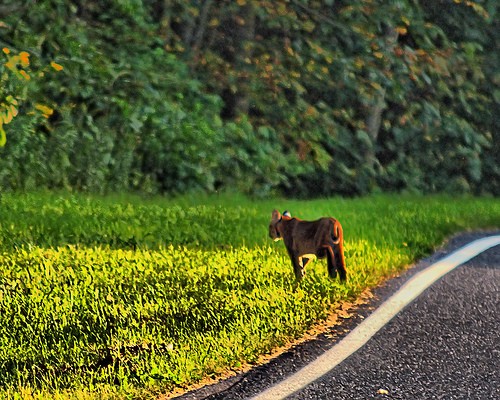“Mountain lions” often turn out to be bobcats
Many of those mountain lions, which seem to be spotted more and frequently, may in fact be bobcats, reports the County Times. In the desert, female mountain lions have a range of about 32,000 acres and males about 64,000 acres (100 sq miles).
However, territories in San Mateo County are smaller because food sources are more readily available, Roessler said.
Animals seen in several recent sightings may have been bobcats, which "seem to be less shy" and "get acclimated to people and neighborhoods," even cozying up on porch chairs, she said.
Bobcats outnumber mountain lions in San Mateo County, and may be the actual source of most mountain lion reports, she said.
Lions "need big ranges, and if you look at that, the Santa Cruz Mountains themselves wouldn’t provide much habitat except for a few lions," Roessler said. "If that’s the situation, then the reports we get are either inaccurate or people are seeing the same lion over and over again."
One possible reason for mountain lions being spotted in residential areas could be that they are young, have just been pushed away from their mothers, and are attempting to establish their territory, Roessler said.
In recent years, animals thought to have been mountain lions have turned out to be bobcats, coyotes or raccoons, say police in Half Moon Bay, Daly City, South San Francisco and Millbrae.
Earlier, Darin Boville suggested that a recent mountain lion sighting near Seal Cove was probably a bobcat.

